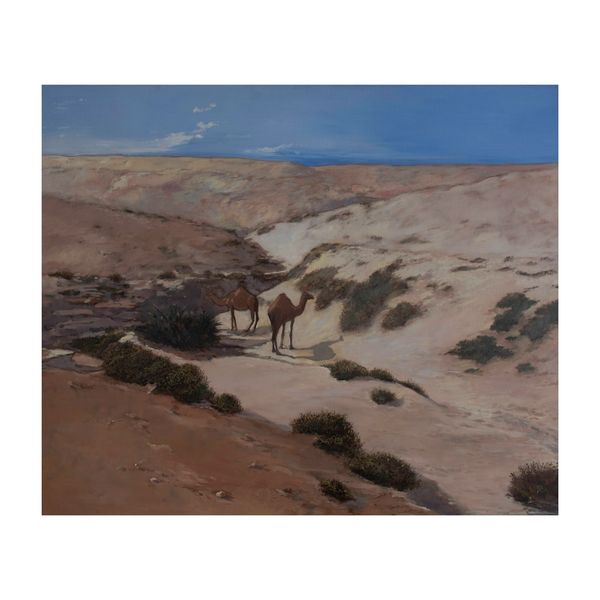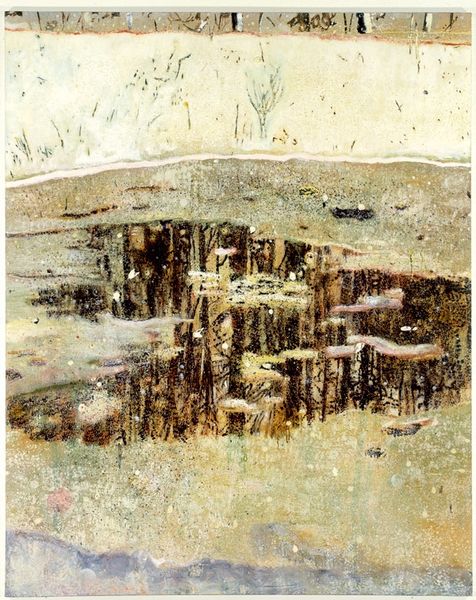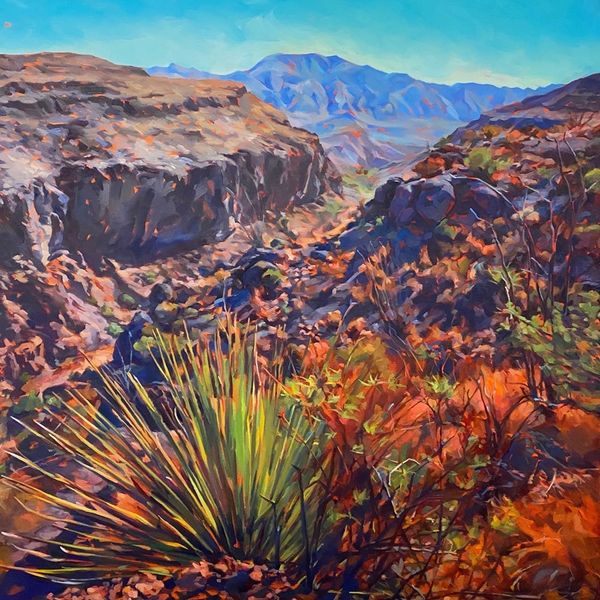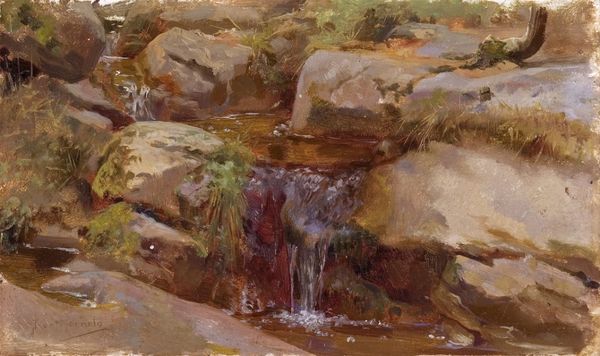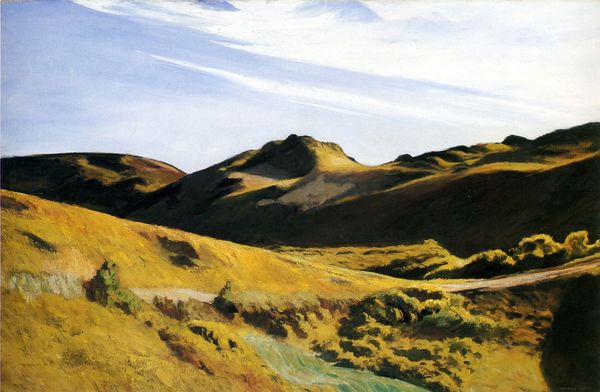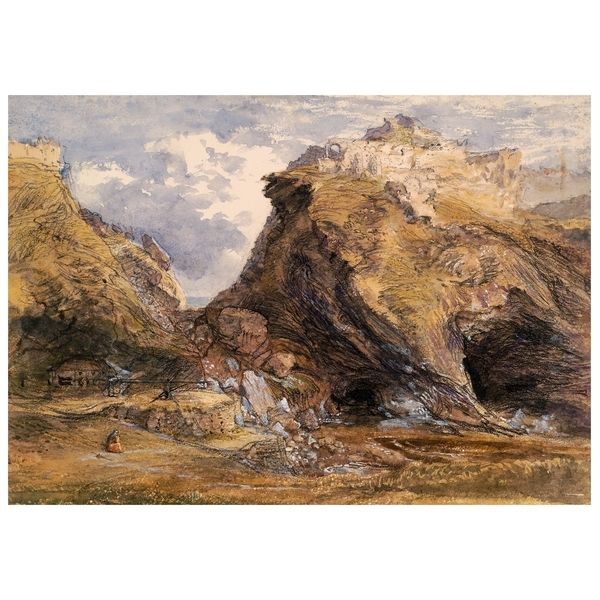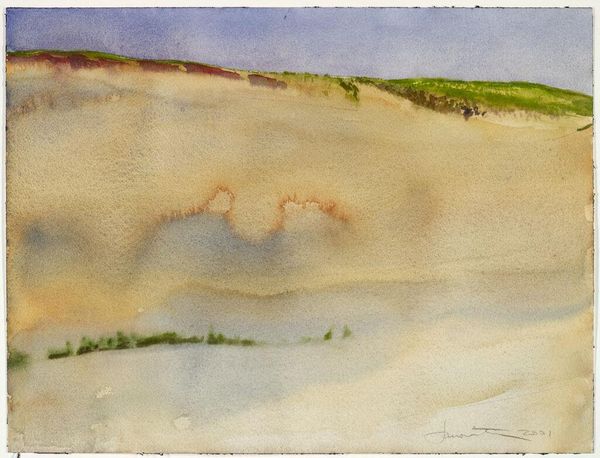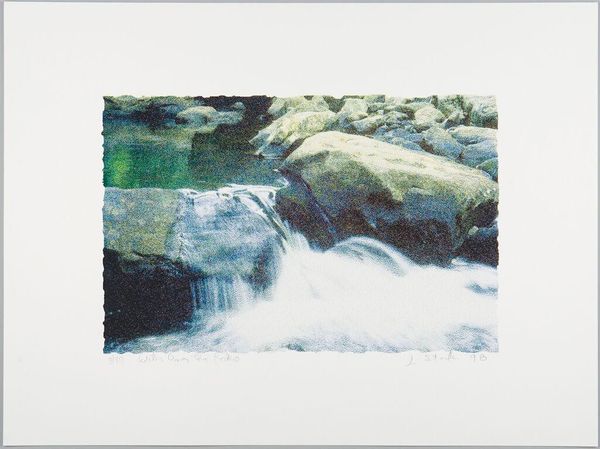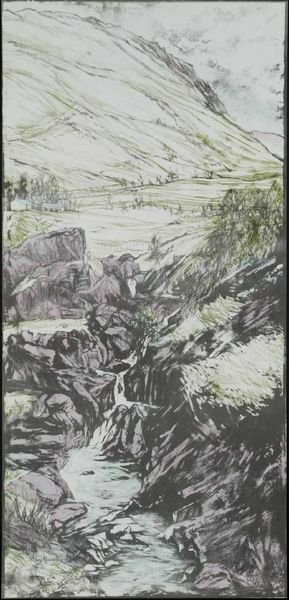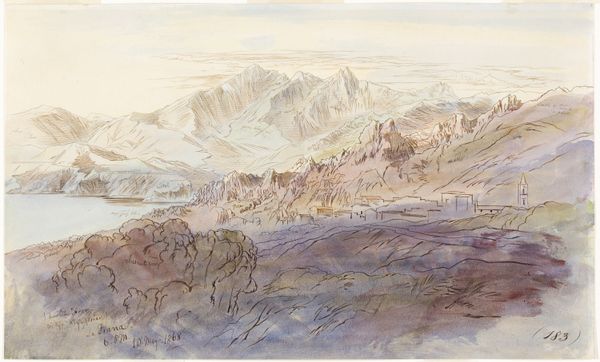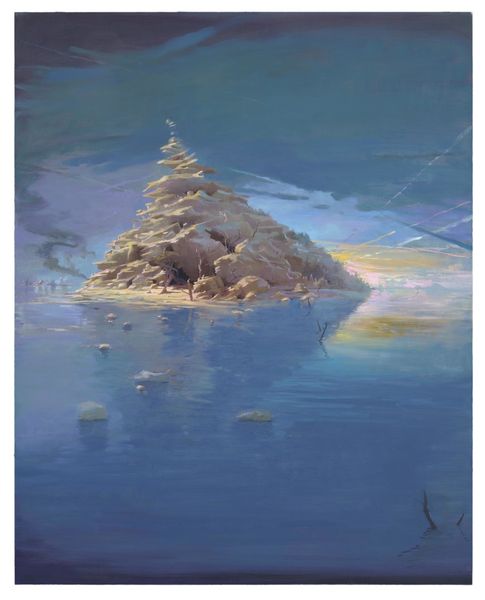
Copyright: Courtesy of the office of Rashid Al Khalifa
Curator: Rashid Al Khalifa painted "RUMAITHA WADI" in 1995. It’s an oil painting, and quite striking, don’t you think? Editor: Absolutely. It’s instantly calming, almost dreamlike. The muted palette and the way the water reflects the sky… it’s mesmerizing. Curator: The reflection plays an important role in this image, which echoes familiar images of life-giving resources in harsh conditions. Water carries potent significance across cultures. Editor: Yes, the presence of that stark white building in the background also grabs the viewer’s attention. I am wondering, is it a marker of civilization, or something more symbolic? Like a distant hope, or promise? The juxtaposition with the immediate natural scene is powerful. Curator: I wonder if the construction of modern cities with more complicated infrastructure for resource usage has changed that initial potent significance of seeing water within dry land. In his landscapes, Al Khalifa seems preoccupied with the materiality of paint, building up textures to mimic the arid landscape, a sort of indexical connection to the environment it depicts. Editor: I see what you mean. The impasto technique is quite evident here. Considering that technique combined with what is being represented, that idea that water can transform what is dry in life-giving is amplified here. It’s like the painting itself embodies transformation through material manipulation. But, those shapes that are used by Al Khalifa carry cultural weight. What might he be thinking? Curator: Indeed! But is he celebrating the endurance and necessity of natural springs to civilization? I want to better understand if Al Khalifa critiques resource consumption by bringing nature and modernity so closely to each other within the same visual frame. Is he urging us to reassess how these intersect in society? Or does he highlight simply its effect of the passing of time on an oasis of this kind, considering that in 1995 cities in the middle east were being rapidly constructed. Editor: Ultimately, he is asking for a careful balance with progress; these geometric markers of progress will not succeed without resources provided by land and nature. Thinking more deeply, it could signify our relationship with history, resilience, the way visual symbols create those bridges of thought and remembrance in time and through culture. Curator: I concur with that idea; this visual and material approach in Al Khalifa´s landscape has me rethinking landscape painting itself. Editor: And for me, seeing the convergence of those ideas with the artist´s careful choice of visual symbology really deepened how I experience this artwork. Thank you for expanding my understanding!
Comments
No comments
Be the first to comment and join the conversation on the ultimate creative platform.
